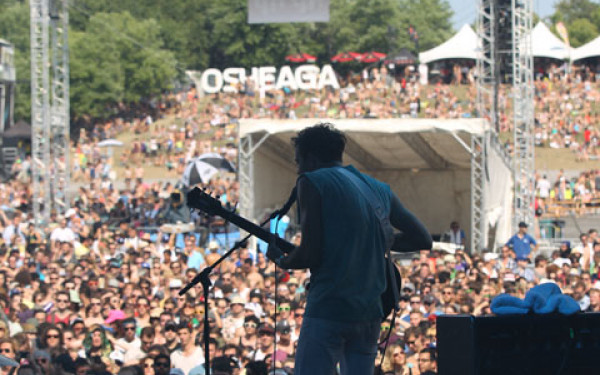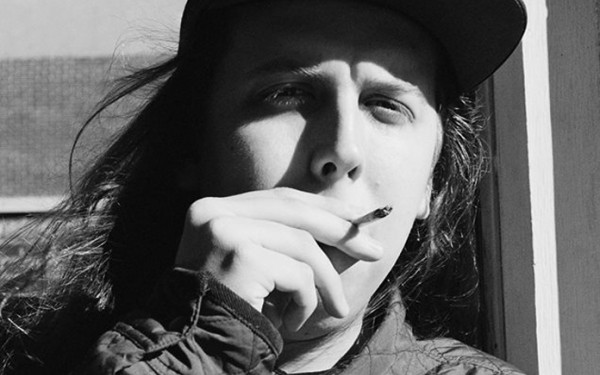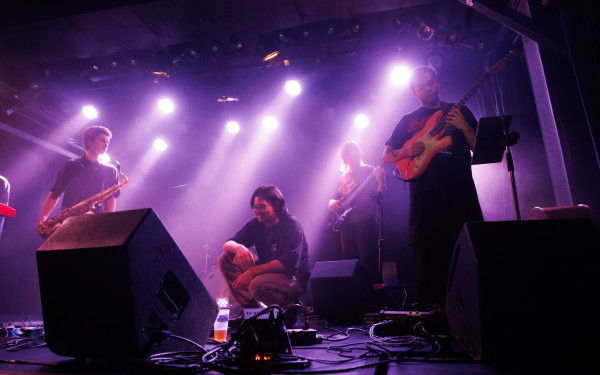Dial M for Mind-Blowing
Local Music Showcase M for Montreal to Feature 100 Artists
In a city internationally recognized as of late for producing music acts like Arcade Fire and Grimes, M for Montreal was founded to help local bands, and other artists, make the same leap onto the big stage.
While it lacks the luster of better-established festivals south of the border, M has grown into a four-day frenzy of concerts, panels and private auditions showcasing a handful of relatively well-known bands as well as emerging artists.
Now in its seventh year, the festival boasts a line-up of 100 acts that would pique the curiosity of even the most jaded record-store clerk.
The list of imported talent includes the Icelandic indie folk/pop group Of Monsters and Men, New York-based A Place to Bury Strangers, and the electro hip-hop artist Death Grips.
Among the Montreal-based acts on the bill are 2012 Polaris Prize nominees Cadence Weapon and Yamantaka // Sonic Titan, along with solo garage rocker Mac DeMarco, veteran synth rockers Duchess Says and Mozart’s Sister.
The festival got off the ground after a meeting between agent Sébastien Nasra and the renowned festival programmer Martin Elbourne, one of the main bookers for the Glastonbury Festival and former agent of The Smiths and New Order. In 2005, Nasra was promoting Québécois singer Jorane in London, and invited Elbourne to scope her out.
“Elbourne is the kind of guy who can’t stay in one place more than five minutes—in a good way. He’s incredibly busy and doesn’t take long to form an opinion,” said Nasra.
To Nasra’s disappointment, Elbourne listened to only a couple of Jorane’s songs before walking out.
“I thought, ‘Oh my god, that’s the end of my life. He hates the artist, he’s never going to talk to me; I’ve been dreaming about this moment all my life and now it’s gone,’” said Nasra.
As it turned out, however, Elbourne had simply stepped outside to have a cigarette. Nasra skipped out of the concert hall and struck up a conversation with Elbourne. That off-the-cuff chat eventually led to the creation of M for Montreal.
The festival was initially established as Quebec’s answer to the College Music Journalism Music Marathon, which takes place in New York City at the end of October.
Like CMJ, M for Montreal is not only about the music, but also intended as an opportunity for young artists to get exposure and make the step up from peddling their EPs to securing tour dates.
“Basically, M for Montreal is, in its core DNA, actually not a festival. We use the means of a festival to accomplish our mission. It is first and foremost a non-profit company that advocates building a platform for exporting Quebec music and Canadian music internationally,” said Nasra.
This year, a record 120 delegates from festivals and agencies around the world are attending M to catch an early glimpse of the next big thing.
Since one of the goals of the festival is to wow foreign delegates, each band has to be able to put on a “killer live show,” Nasra said.
“We need bands to have live performances that are mind-blowing or special in their own way. Even if it’s more pop or indie underground—as long as it’s transcending.”
Over the past decade, Montreal has garnered international attention as a hotspot of what is loosely described as the “indie” music scene.
The contemporary wave of Montreal-based indie bands inspired by electronic dance music has only enhanced the city’s reputation. The buzz has even led the London’s The Telegraph to dub Montreal “the new Brooklyn.”
“Montreal is hip on the worldwide scene now,” Nasra observed.
“Not to say Toronto sucks or Vancouver sucks. It’s just that there’s some hype happening here. We are becoming more of an international destination for musicians from everywhere, including English Canada,” he said.
“They see there’s a genuine interest in music in this city. It’s an interesting phenomenon.”
The multicultural character of the city also helps explain Montreal’s rich indie scene, said Nasra.
“Some people wonder what it is in the water here. I think there are many different reasons, including the cultural aspect, the franco-anglo interaction,” he said.
“It’s probably more developed now than it was 15 years ago. Instead of being in isolation, they are becoming more of a blend. That brings a lot of value to both cultures.”

_900_545_90.jpg)
_600_832_s.png)




